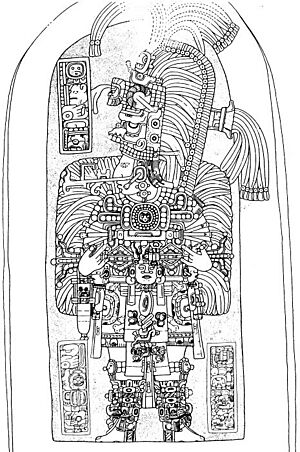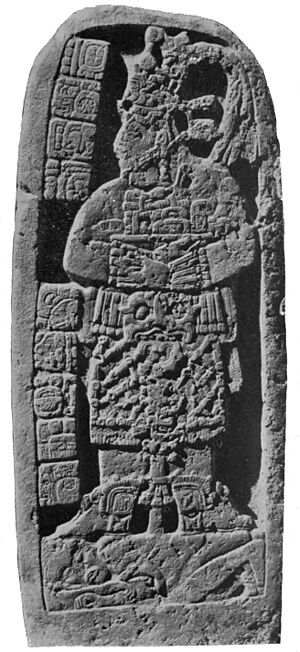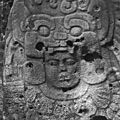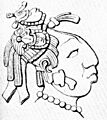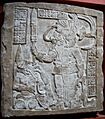Maya monarchs facts for kids
Maya monarchs, also known as Maya kings and queens, were the main leaders of the Maya civilization. Each Maya city-state was ruled by a family of kings. The job of king was usually passed down to the oldest son.
Contents
How Maya Kings Showed Their Power
Maya kings wanted to show everyone that they had the right to rule. One important way they did this was by building huge temples or pyramids. For example, Tikal Temple I was built when Yikʼin Chan Kʼawiil was king. Another famous king, Kʼinich Janaabʼ Pakal, also showed his power by building the amazing Temple of Inscriptions at Palenque. This temple still stands tall today, showing how powerful Palenque was.
Becoming a Maya Ruler
Maya kings often acted like gods. If a ruler died and didn't have a child to take over, it could cause wars and fighting. For example, King Pacal's relative, Pacal I, died in battle. But instead of chaos, the city of Palenque invited a young prince from another city to be their new king. He was only twelve years old!
Growing the Maya City-States
Kings like Pacal and his family didn't just build grand temples. They also made their city-states much bigger, turning them into strong empires. Under Yikʼin Chan Kʼawiil, Tikal took over Calakmul and other cities nearby. This created a very large and powerful city-state. Pacal also made Palenque a major center for power and growth.
What Maya Kings Had to Do
A Maya king had many important jobs.
- He had to be a great military leader. Kings often led attacks against rival city-states.
- They also offered their own blood to the gods in special ceremonies.
- Rulers were expected to be smart and solve problems their city faced, like wars or food shortages.
- Maya kings also made sure the gods received prayers and attention. They did this by holding public events, like parades through their cities. A more private ceremony was blood sacrifice, which was done by the lords and their wives.
Famous Maya Rulers from the Classic Period
The Classic Period was a time when Maya cities were at their strongest. Here are a few important rulers:
Palenque: Kʼinich Janaabʼ Pakal I
Kʼinich Janaabʼ Pakal I, often called "Pakal the Great," was one of the most famous Maya kings. He ruled Palenque for 68 years! During his long reign, he built many of Palenque's most famous buildings and carvings. He was born in 603 AD and became king in 615 AD. He passed away in 683 AD when he was 80 years old. His tomb inside the Temple of Inscriptions is one of the most important Maya discoveries.
Tikal: Jasaw Chan Kʼawiil I
Jasaw Chan Kʼawiil I was a very important king of Tikal. He ruled from 682 AD to 734 AD. He is famous for defeating the rival city of Calakmul in 695 AD. This victory helped Tikal become very powerful again. He also built Tikal Temple I, a huge pyramid that is still a symbol of Tikal's strength.
Naranjo: Lady Six Sky
Wak Chanil of Dos Pilas was a powerful queen who came from the city of Dos Pilas to rule Naranjo. She started a new royal family in Naranjo and was a very strong leader. She ruled from 682 AD, first as a regent for her son, and then as queen herself. She was known for organizing many successful military campaigns that helped Naranjo defeat other cities like Tikal and Yaxha.
Copán: Uaxaclajuun Ub'aah K'awiil
Uaxaclajuun Ub'aah K'awiil, also known as "18 Rabbit," was a king of Copán. He ruled from 695 AD to 738 AD. He was a great builder and many beautiful sculptures and buildings in Copán were made during his time. Sadly, he was captured and beheaded by the ruler of Quiriguá, a nearby city.
Images for kids
See also
 In Spanish: Gobernante maya para niños
In Spanish: Gobernante maya para niños



